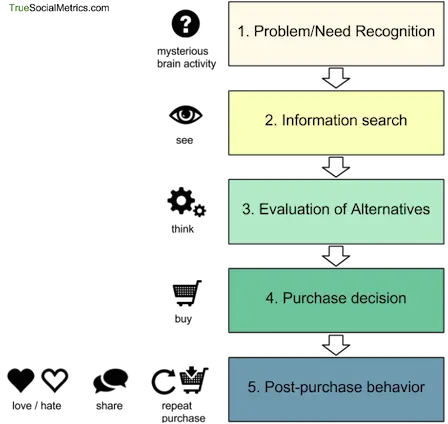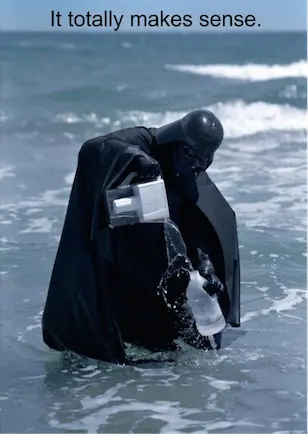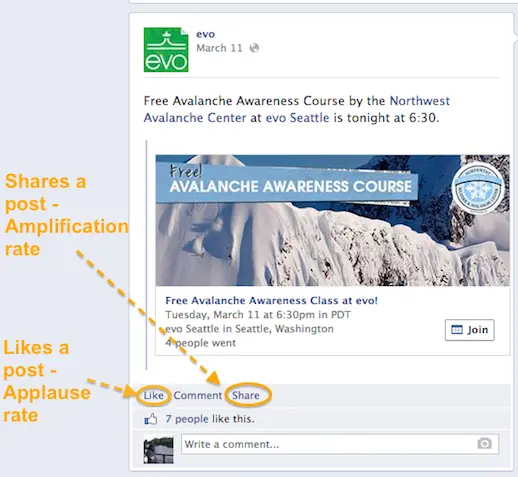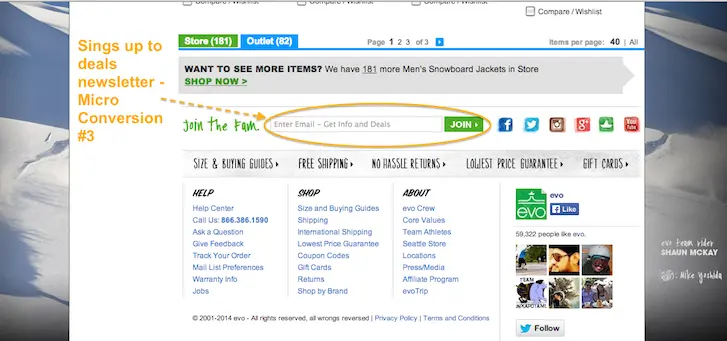Why You Should Stop Trying to Measure ROI for Social Media Marketing
by Member of TrueSocialMetrics team ~ 5 min
Stop making your boss and clients unhappy by trying to measure the ROI of your Social Media efforts. Here’s why.
Every kid on the block knows about the stages of the Buying Decision Process:
Or as Avinash Kaushik has simplified the process: See-Think-Do stages. Simply put, this means that people usually don’t buy things instantly, instead they think before doing it. Yet when everyone starts implementing their Social Media Analytics, they forget about this process. It’s quite obvious that different channels/content/keywords should be targeted to the different needs of users, depending on their current stage in the Buying Decision Process. But what almost everyone overlooks is that KPIs should also be chosen according to the stage that’s being targeted.
For most businesses, Social Media Presence is designed to solve problems in stages 1-3 and stage 5, where social media is an informative touchpoint for a brand. For some businesses, although not all, social media could also be a salespoint with a direct call to action and a link to a checkout page (e.g., for e-commerce brands on Pinterest).
The Holy Grail KPI for a “Purchase stage” is Conversion rate. While it’s quite logical to measure how many people have purchased from you, based on those who wanted to buy your product at this exact time, there’s little point in trying to measure Conversion rate among people who never even intended to purchase anything right now. It’s like grabbing a stranger in the middle of the street and asking him why he didn’t buy your product. Creepy and useless.
I once heard a highly skilled digital marketing expert complaining that nobody likes to measure the ROI of Social Media Marketing because it’s always negative, thus your boss and clients are always unhappy with you. Of course the results are always negative! Because ROI measurements are based on Conversion rates and are strongly connected to sales. Yet most of the social media content strategies are focused on solving the problems of the first 2 stages of the Buying Decision Process, which does NOT involve sales.
So unless you have some advanced-extraterrestrial-predictive-statistical model calculating how many of your fans, who currently don’t have a need to buy anything, will purchase from you in a future, then you can’t calculate ROI correctly for your SMM strategy! In this case it is designed for the “Need recognition” and “Information Search” stages (stages 1 and 2) so until you acknowledge this and accept it, your boss and clients will always be unhappy.

Image source
But don’t worry, there’s always a solution. One solution is to try to measure Micro Conversions on your site, which are the little steps that your visitors make when researching your product and evaluating it against alternatives. In addition, you can measure Engagement metrics for your social media content - Conversation rate, Applause rate, Amplification rate. Let me show you how this works.
Real world examples, finally
Let’s say you sell awesome snowboarding jackets. On the other side of the globe, Mr. Green, wanting to impress his new girlfriend, decides to learn some snowboarding tricks. But he has no idea where to start to achieve this. Then one day he stumbles upon your Facebook page. He Likes your post (Applause rate) about an Avalanche Awareness course and shares it (Amplification rate) on his timeline to show his friends how cool and dangerous snowboarding is.
He also thinks: “Avalanches are bad, and since the course is free, I really should join it.” So he follows the link to your site, where he finds tons of valuable blog posts, plus a collection of some really cool jackets. Mr. Green doesn’t need a jacket right now because it’s summer, but he may need it in 5 months when the season starts.
So he adds your blog’s RSS feed to his RSS reader to keep learning more about snowboarding and how to select the best equipment (Micro conversion #1). He also checks out the info about worldwide shipping – since Mr. Green lives outside the US, this is crucial for him (Micro conversion #2).
He then subscribes to your promotions newsletter, because he doesn’t want to miss out on a good discount (Micro conversion #3).
At this point, the ROI is negative because Mr. Green hasn’t bought anything, but that’s because he had no intention to. Instead, Micro Conversions and Social Media Engagement metrics (Amplification, Conversation, Applause) have captured his intent to research information and evaluate alternatives.
When everything is measured according to a stage, everyone is happy. You win the love of your boss, and Mr. Green wins the heart of his girlfriend. Everyone lives happily ever after :)
Happy end
(and happy beginning)
When you’re ready to rock your social media analytics
give TrueSocialMetrics a try!
Start Trial
No credit card required.








